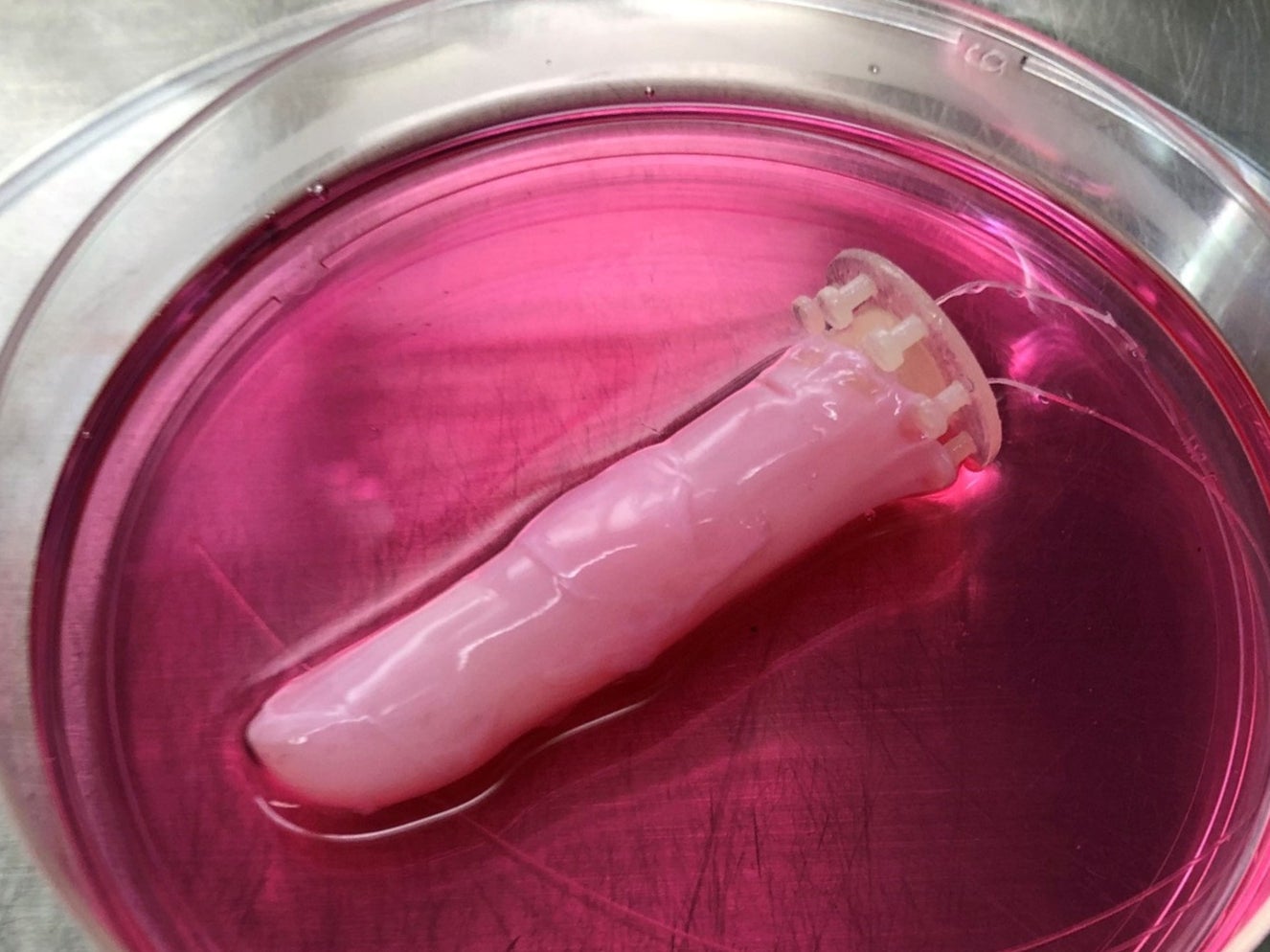Japanese scientists develop ‘Terminator’-style robotic fingers
‘It’s interesting to hear the sound of the motor in harmony with a finger that looks like a real one,’ University of Tokyo expert says

Your support helps us to tell the story
From reproductive rights to climate change to Big Tech, The Independent is on the ground when the story is developing. Whether it's investigating the financials of Elon Musk's pro-Trump PAC or producing our latest documentary, 'The A Word', which shines a light on the American women fighting for reproductive rights, we know how important it is to parse out the facts from the messaging.
At such a critical moment in US history, we need reporters on the ground. Your donation allows us to keep sending journalists to speak to both sides of the story.
The Independent is trusted by Americans across the entire political spectrum. And unlike many other quality news outlets, we choose not to lock Americans out of our reporting and analysis with paywalls. We believe quality journalism should be available to everyone, paid for by those who can afford it.
Your support makes all the difference.A way of covering a robotic finger with living human cells has been developed by Japanese scientists.
Researchers at the University of Tokyo were able to give the artificial digit skin-like texture, as well as making it water-repellent and self-healing.
The new breakthrough is more than a little reminiscent of the T-800 Terminator played by Arnold Schwarzenegger in the sci-fi film franchise, whose fictional hunter-killer robot featured “living tissue over a metal endoskeleton” that helped it inflitrate groups of human resistance fighters battling the evil Skynet AI.
Professor Shoji Takeuchi, who has authored a study on the new technique, said: “The finger looks slightly ‘sweaty’ straight out of the culture medium.
“Since the finger is driven by an electric motor, it is also interesting to hear the clicking sounds of the motor in harmony with a finger that looks just like a real one.”
Looking “real” like a human is one of the top priorities for humanoid robots that are often tasked to interact with humans in healthcare and service industries.
Prof Takeuchi said a human-like appearance can improve communication efficiency and evoke likeability.
While current silicone skin made for robots can mimic human appearance, he explained that it “falls short” when it comes to delicate textures such as wrinkles and lacks skin-specific functions.
Previous attempts at fabricating living skin sheets to cover robots have also had limited success, since it is challenging to conform them to dynamic objects with uneven surfaces.
Prof Takeuchi said: “With that method, you have to have the hands of a skilled artisan who can cut and tailor the skin sheets.
“To efficiently cover surfaces with skin cells, we established a tissue moulding method to directly mould skin tissue around the robot, which resulted in a seamless skin coverage on a robotic finger.”
To craft the skin, the Tokyo team first submerged the robotic finger in a cylinder filled with a solution of collagen and human dermal fibroblasts, the two main components that make up the skin’s connective tissues.
Prof Takeuchi says the study’s success lay in the natural tendencies of the collagen and fibroblast mixture, which shrank and tightly conformed to the finger.
Just like paint primers, the layer provided a uniform foundation for the next coat of cells – human epidermal keratinocytes – to stick to.
The cells make up 90 per cent of the outermost layer of skin, giving the robot a skin-like texture and moisture-retaining barrier properties.
Prof Takeuchi said: “The crafted skin had enough strength and elasticity to bear the dynamic movements as the robotic finger curled and stretched.
“The outermost layer was thick enough to be lifted with tweezers and repelled water, which provides various advantages in performing specific tasks like handling electrostatically charged tiny polystyrene foam, a material often used in packaging.”
When wounded, he said the crafted skin could even self-heal just like humans’ with the help of a collagen bandage, which gradually morphed into the skin and withstood repeated joint movements.
Prof Takeuchi said: “We are surprised by how well the skin tissue conforms to the robot’s surface. But this work is just the first step toward creating robots covered with living skin.
“The developed skin is much weaker than natural skin and can’t survive long without constant nutrient supply and waste removal.”
Now Prof Takeuchi and his team plan to address those issues and incorporate more sophisticated functional structures within the skin, such as sensory neurons, hair follicles, nails, and sweat glands.
He added: “I think living skin is the ultimate solution to give robots the look and touch of living creatures since it is exactly the same material that covers animal bodies.”
The study was published in the journal Matter.
SWNS



Join our commenting forum
Join thought-provoking conversations, follow other Independent readers and see their replies
Comments